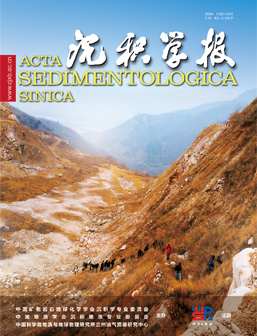A Review on Mercury as Proxy for Volcanism during the Paleocene-Eocene Thermal Maximum
doi: 10.14027/j.issn.1000-0550.2024.125
- Received Date: 2024-08-01
- Available Online: 2025-03-04
-
Key words:
- Paleocene-Eocene Thermal Maximum /
- North Atlantic Large Igneous Province /
- mercury concentrations and isotopes /
- ocean deoxygenation
Abstract: [Significance] Since the beginning of the Industrial Revolution, human activities have resulted in the sustained release of greenhouse gases, including carbon dioxide (CO2) into the atmosphere. This has been primarily driven by the combustion of fossil fuels, which has resulted in profound climatic disturbances, environmental transformations, and widespread biological crises. Similarly, the Paleocene-Eocene Thermal Maximum (PETM, ~56 Ma) represents a period of massive carbon release into the atmosphere, during which carbon emissions occurred at a rate strikingly comparable to current anthropogenic carbon emissions. It is of paramount importance to gain a comprehensive understanding of the processes and mechanisms that regulated carbon release during the PETM. Such knowledge can provide valuable insights into the impact of these emissions on Earth's habitability. Furthermore, these findings have significant implications for our attempts to gain an understanding of present-day and future climate change. It is consequently of the highest scientific importance to study this ancient climatic event, as it offers a natural experiment for evaluating the potential consequences of contemporary carbon emissions on global climate dynamics and ecological stability. [Progress] The trigger of the PETM has been the subject of considerable debate among scholars in the past few decades. Despite extensive research, the exact mechanism that instigated the massive carbon release during the PETM remains unresolved. Nevertheless, the findings of recent studies have indicated a temporal correlation between magmatism in the North Atlantic Large Igneous Province (NAIP) and the PETM. This evidence suggests that volcanic activity in NAIP was likely to be have been the trigger of the climatic perturbation. While this hypothesis adds to our insights into the triggering mechanisms of PETM events, our understanding of the exact cause-and-effect relationship between volcanic activity and climate fluctuations during this transition remains incomplete. A significant challenge in fully establishing this relationship is the difficulty of accurately tracing volcanic activity in the sedimentary record during this period. This is due to the complex nature of volcanic products and their subsequent alteration over millions of years, which makes it challenging to identify and distinguish between different volcanic events. [Conclusions and Prospects] During the past decade, mercury (Hg) concentrations and their isotopic compositions in sediments has emerged as a promising tool for tracing volcanic activity throughout geological history. However, the current research focusing on the Hg record of the PETM is largely limited to near-shore areas proximal to the NAIP eruption sites. Few studies have explored the Hg concentrations in sediments from open-ocean regions situated at a considerable distance from the eruption centers, leaving a significant gap in our understanding of the broader extent of NAIP's influence. The spatial limitations of this study restrict our ability to fully assess the global impact of volcanic emissions on Earth's climate and ecosystems during the PETM. This paper provides a comprehensive review of the current state of research on the use of mercury deposition as a tracer of ancient volcanic activity during the PETM. It identifies existing research limitations and suggests key directions for future studies. It also reviews the possible relationship between the volcanic activity of the NAIP and the climatic events of the PETM, emphasizing the need for further interdisciplinary research to resolve outstanding issues and refine our understanding of this critical period in Earth's history.
| Citation: | A Review on Mercury as Proxy for Volcanism during the Paleocene-Eocene Thermal Maximum[J]. Acta Sedimentologica Sinica. doi: 10.14027/j.issn.1000-0550.2024.125 |






 DownLoad:
DownLoad: